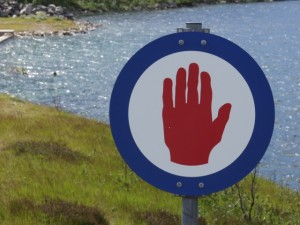How to Write a Cease and Desist Letter
I’ve talked before about what to do if you get a Cease and Desist letter, but what should you do (and how should you do it) if you want to send a C&D?
This week’s post walks you through the process and helps explain what you should say when you are telling someone to stop infringing your work.
For this post I’m assuming someone is doing something with work that you created and own, and you want them to stop. And I’m assuming you don’t have the cash to talk with an attorney but you want to do something to protect your interests.
This is DIY guidance on what you can do to protect your rights, but it’s not legal advice (why not? read this). If you have the opportunity or ability to consult with an attorney, I highly recommend that you do it.
But I know that not everyone can talk with an attorney. And I don’t think that should impact your ability to protect your work.
First off, let’s talk about when cease and desist letters are appropriate and when they’re not.
1. You must own the work that the other party is misusing. That means you’re the copyright or trademark owner. This isn’t a Work For Hire piece or something you’ve licensed to someone else. It’s yours.
2. The other party must be using the work in a way that is not legally OK (i.e. in violation of copyright or trademark law). You shouldn’t go after people who are using the work legally. One, because you don’t have a right to do that. And two, because it’s super jerky. And you aren’t a jerk.
Some examples:
Someone copied an original drawing of yours and is selling it on the internet. YES!
Someone is riffing off an idea in a story you wrote and they’re getting a lot of attention for it. NO!
Someone is using your company’s name to sell their products and you keep getting emails from fans who are confused. YES!
Someone is selling something similar to what you sell, but it’s not a copy and they aren’t referencing your work. NO!
Generally speaking, you have the right to ask someone to stop doing something when what they are doing infringes your legal rights.
Make sure you feel comfortable with the basics of how copyright and trademark law apply to your work and your situation before you send the letter.
Read up on Fair Use as well. Fair Use (which can include parody and satire) is an exception to many of the prohibitions of copyright and trademark law.
If you’re fuzzy on where the bright line is between Fair Use and Not Fair Use, you’re in good company. There are few bright lines. But being mindful about the law and how it applies to your work is important if you’re going to flex your ownership muscles.
Next up, take screen shots or pictures of what you want to stop. Collect URLs or other evidence about how and where the other person or company is infringing your work. Assume that when confronted they’ll try to hide what they did. Do what you can to make that difficult. By which I mean, if you get a “Nu-uh, that’s not on my website” response, you have evidence you can point to to say, “Well, it was when I sent my letter.”
Then, figure out who to send the C&D to.
If it’s a person misusing your work: do your best to find their contact information on their website or blog and send your letter there. If you find a few addresses and can’t figure out which is the best to use, send the letter to all of them.
If it’s a company misusing your work: if the company is large enough, you might be able to find a contact for their legal department. If you can find that information, send it there. If you can’t, look for the contact that looks most like it would be going to Someone In Charge. Avoid sending the letter or email to a Customer Service or Info@ address, if possible.
Email is good; letters are good. You can do one or the other or both. The format is not nearly as important as the content.
Which is:
1. Who you are (“I am the creator and copyright/trademark owner of [the work you own].”)
2. What they are doing (“You are using images from my work [title] in your [thing they are using your work in]. You do not have permission to use my work. Your use is an infringement of my rights as a copyright/trademark owner.”)
3. Where they are doing what they are doing. (“You are selling/displaying/
4. What you would like them to do. (“Remove these items in your store/on your website, and any other items that impermissibly use my work, and cancel any current orders for any such items within the next XX hours/XX days.”)
5. What will happen if they don’t do what you ask them to do. (“If you fail to remove the items, I will have to escalate this matter to my attorney.”)
6. Sign off (“Thank you for your cooperation and attention to this matter. Sincerely, etc.”)
If you’ve submitted a DMCA take down notice that’s related to the thing you’re writing them about, you can mention it in your letter. If you think you’re owed damages and want information about how much they’ve made off of your work, be sure to ask for it.
You do not have to take an agressive or “lawyerly” tone in your letter. Write like yourself. Be clear. Be honest.
Make sure you keep a copy of whatever you send and note when you sent it and to whom.
If they don’t do what you ask them to do in the time you gave them, be sure to follow up on what you said you’d do.
If it doesn’t work the magic you were hoping for, seek help from an attorney. Don’t know one? There are a lot of organizations out there that try to connect affordable attorneys with artists who need attorneys.
Sometimes all you need to do is let people know you know what they’re doing and they’ll stop. Sending a Cease & Desist letter is one way to do just that.
Categories: The Rest








One thing I would add to this helpful post is this: If you are using your work as a trademark, consider registering it either at the state or federal level. Registering your mark means that if you have to go to court, you may be able to get the infringer to pay you multiple damages plus your legal fees.